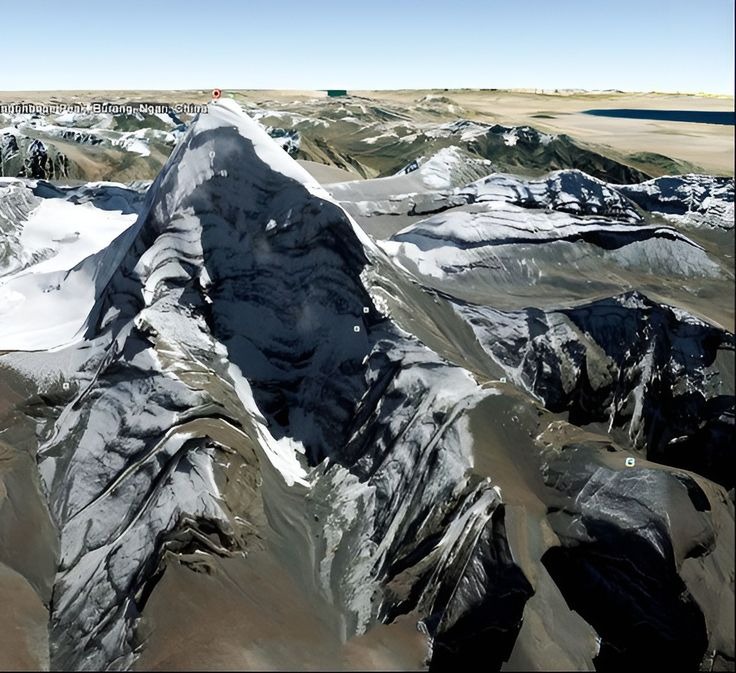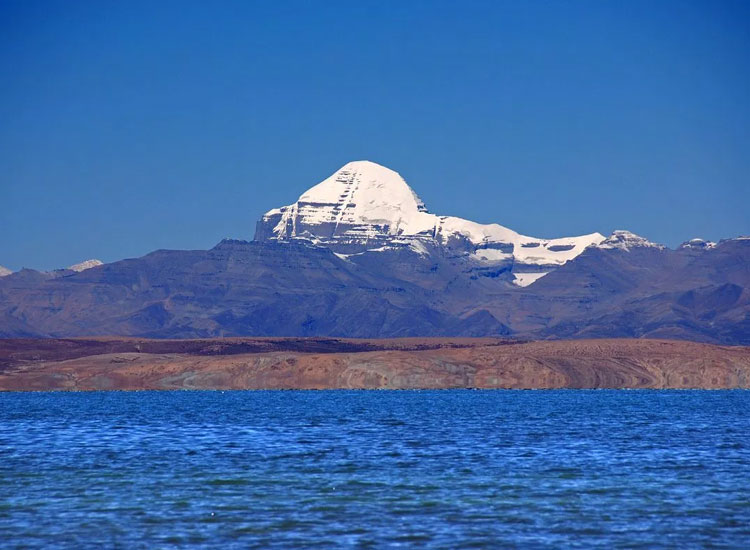Standing at an impressive height of 6,638 meters in the isolated area of Tibet, Mount Kailash is more than just a mountain—it represents a spiritual, cultural, and geographical enigma. Esteemed as one of the holiest sites globally, Mount Kailash has attracted pilgrims, explorers, and scholars for centuries. Yet, beneath its visible magnificence and wonder lies a realm filled with enigmas, legends, and supernatural stories that continue to fascinate contemporary minds. It is also a sign of hindu religion in china
Mount Kailash has been revered since ancient times by followers of Hinduism, Buddhism, Jainism, and Bon religion. In Hindu mythology, it is considered the abode of Lord Shiva, where he resides with Goddess Parvati in eternal meditation. Jain texts describe it as Mount Ashtapada, where the first Tirthankara, Rishabhdev, attained Nirvana.
In Buddhism, it is regarded as the abode of Demchok, a fierce form of Buddha. The Bon religion holds that it is the throne of the Sky Goddess Sipaimen.
No-Trek Zone
Heartwarming and interesting stories of pilgrims
Mount Kailash, honored in Hinduism, Buddhism, Jainism, and Bon, is more than just a mountain—it serves as a spiritual beacon that attracts seekers from around the globe. The accounts of pilgrims who have braved the difficult terrain to undertake the sacred Kailash Parikrama are rich with faith, miraculous events, and personal transformation.
One particularly moving story involves an elderly Indian couple in their late 70s who spent 20 years saving money to make the journey to Mount Kailash. Despite their physical frailty, they managed to complete the challenging 52-km Parikrama on foot. Locals and fellow travelers assisted by carrying their bags, and the couple reported feeling as if a divine force was propelling them onward each day.
One captivating story involves a Buddhist monk from Ladakh who made the entire pilgrimage barefoot while reciting mantras. He traveled without food or water but received assistance from strangers along the way. When inquired about his survival, he modestly responded, “Kailash nourishes those who believe.”
Shiva Face on Mount Kailash – Divine Mystery or Nature’s Miracle?

The hallowed home of Lord Shiva, Mount Kailash, is riddled with secrets that cannot be explained. The sight of a human-like face on its southern face, which millions of people believe to be Mahadev’s own heavenly face, is one of the most breathtaking.
This naturally occurring rock formation resembles a meditating Shiva in that it seems to have eyes, a nose, and lips. Seeing this form, especially at sunrise or sunset when shadows accentuate the mountain’s outlines, is said to evoke an overpowering sense of spiritual energy in devotees and pilgrims from all over the world.
Believers see it as a cosmic sign—a visible confirmation of Shiva’s presence—while geologists say it’s just a coincidence of natural erosion and rock patterns.Innumerable tales, images, and spiritual interpretations have been sparked by the formation’s remarkable symmetry and expression.
The formation appears to “watch” silently when viewed from certain angles, particularly from the south, which heightens Kailash’s menacing aspect. Many people see it as more than simply a visual illusion; it’s a spiritual experience that connects them to the holy and transcends science.
Mount Kailash is still a representation of strength, quiet, and profound cosmic enigma.
Shape and Alignment
Kailash Mansarovar Lake

Final Thought
Mount Kailash is more than just a mountain—it represents a pilgrimage of the spirit and embodies a mystery that transcends faith, science, and time. For millennia, it has remained pristine, silently observing as civilizations rose and fell, and as seekers approached with hearts brimming with belief.
Its charm lies not only in its spiritual importance, but also in the questions it raises—time distortions, magnetic enigmas, and the deep sense of tranquility or energy that devotees claim to experience. For some, it serves as the ultimate measure of faith. For others, it is the last great enigma of the Earth.
Whether seen through the perspective of legend or science, Mount Kailash continues to be a site where the tangible meets the mysterious. It challenges our comprehension of the physical realm and invites us to explore the potential of something larger than ourselves.


Hi, this is a comment.
To get started with moderating, editing, and deleting comments, please visit the Comments screen in the dashboard.
Commenter avatars come from Gravatar.